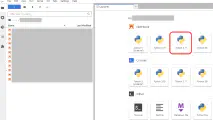Let’s go through the most typical use cases and their benefits to start using a data science platform.
Exploratory analysis
Projects come and go, and teams need to respond quickly to management analysis needs. The process often repeats itself: Create a new environment, get data, do basic analysis and finally draw conclusions.
Data science platforms have all these capabilities built-in. Time is not spent setting up these projects, and while can focus on beautiful visualizations and groundbreaking analysis.
Management of machine learning process
Some data science platforms have robust tools for machine learning operations (MLOps). Your team can effortlessly manage and deploy model versions as APIs with great speed.
Your laptop does not scale
Your laptop is limited work environment. It has fixed amount of storage, memory and CPU. Many average work laptops do not even have graphical processing unit (GPU) which happens to be suitable for data intensive computation.
Data science platforms are typically hosted in cloud. They have access to unlimited computation resources which can be scaled on-demand.
Turn-key solution for data science workbench
Running single Python or R scripts is fine to get started with a data science project. Soon you realize you are installing Python virtual environment for each project manually and fight with the version dependencies.
Data science cloud platforms are convenient. You just log in to browser and start working where you left off yesterday.
No need to open 17 different windows and install operating system updates before you get to the work.
Collaboration between data scientists
Modern data science platforms have all needed collaboration tools built-in. Working in the same notebook real-time, version control, access management and resource sharing to save costs.




Write a new comment
The name will be visible. Email will not be published. More about privacy.